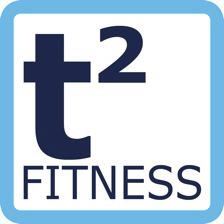In case you missed it see what’s in this section
Let's Talk
Sessions, Workouts, Programs and Auto-Regulation
T2 Fitness Education analyse the differences between sessions, workouts and programmes and discuss why auto-regulation is important.
If you’re reading this and into fitness, then chances are that you’ve followed a fitness program at some point.
The general premise behind a program is to set a regime of work to be done in each given session at the gym. Based on the goals you set and your timeframe, a qualified trainer will be able to design a longer term program to help you reach your goals.
Programme vs Session - they’re the same, aren’t they?
Sometimes it can be tricky to keep up with the language as these terms sound like they imply the same thing, but they are different.
- A ‘session’ is an isolated workout. This can be any single session you complete be it a spin class, weights, a run or so forth.
- Your ‘program’ is an overall plan that gets you to your end goal. It encompasses all of your sessions and allotted rests.
Over time, your program will evolve and adapt to your situation and flexibility is key. So if you find yourself with more time, you could add an extra sessions. Or if you’re travelling with work and your hotel hasn’t got a gym, then pack your trainers and go for a run instead.
Life gets in the way and being adaptable is important. Try not to restrict yourself so much that you frequently miss out on social events or other meetings because you’re strictly following a program.
Sure, if you’re an elite athlete and your livelihood depends on it, it’s different. But for those of us who want a program to keep fit and healthy, a little give and take will ensure that you stay motivated and don’t resent what you’re trying to achieve.
So what's auto-regulation?
If your program is disrupted due to something out of your control - such asmissing a spin class due to work - then your workout needn’t be affected in the same way.
When you start a session, you control how hard you work and your efforts yield the results you want. This is what we call ‘auto-regulating’.

Here is a simple program that we're sure you’ve seen before if you have ever had an induction to the gym:
- Warm-up – Treadmill 10 mins, stretch
- X-trainer, 20 mins
- Chest press 3x15
- Lat pull down 3x15
- Leg extension 3x15
- Shoulder press 3x15
- Leg curl 3x15
- Cool down – Stretch
Sound familiar? We suspect it does as this is the default session for most fitness instructors.
In this form, it is not a workout… but it could be! If you attack this with everything you’ve got then it will become a workout but you have to be able to think for yourself.
One of the best pieces of gym advice is ‘the worst program carried out with maximum intensity will work better than the best program done at half-pace.’
The following are a set of questions to ask yourself when you're going through a session.
What does ‘15 reps’ mean to you?
- Performing the action 15 times and then moving on?
- Or monitoring your techniques through the full range of motion for each one and making sure that the last couple are barely completed due to fatigue?
What does a ‘rest period’ mean to you?
- Clock-watching until every last second of the 2mins is up before you even think about grudgingly starting again?
- The minimum timeframe you need to gather yourself for another all-out effort?
- Or time spent preparing for the next set by stretching the working muscle and its antagonist (stretching the opposite muscle allows further force to be achieved – reciprocal inhibition)?
How do you finish your session?
- When you’ve finished all your sets, are you showered and in the jacuzzi quicker than it took to warm up?
- Are you totally wiped out?
- Or have you got enough left for an extra set of each exercise performed back-to-back with minimum rest in circuit-fashion?

All of the above are auto-regulation decisions you can make when you’re in the gym. The answers you come up with likely will shape the outcome of your workout, program and eventually your body.
Imagine a regular light switch. Once you turn it on, it’s on. This is similar to exercising our muscles. Once a muscle has adapted to a given stimulus, it’s time to change the stimulus and challenge it in another way.
The reality is unless you're in a 1:1 session, your gym instructor will probably not be monitoring your performance quite that closely, so it’s up to you to take control.
It’s your mind and body. It should look and feel how you want it to, so ensure you're tapping in to auto-regulation to get the results you desire.
If you love fitness and wellbeing and would like to turn your passion into an enriching new career, check out T2's Level 2 Fitness Instructor & Level 3 Personal Trainer courses.
Weather in Swindon
Listings






















